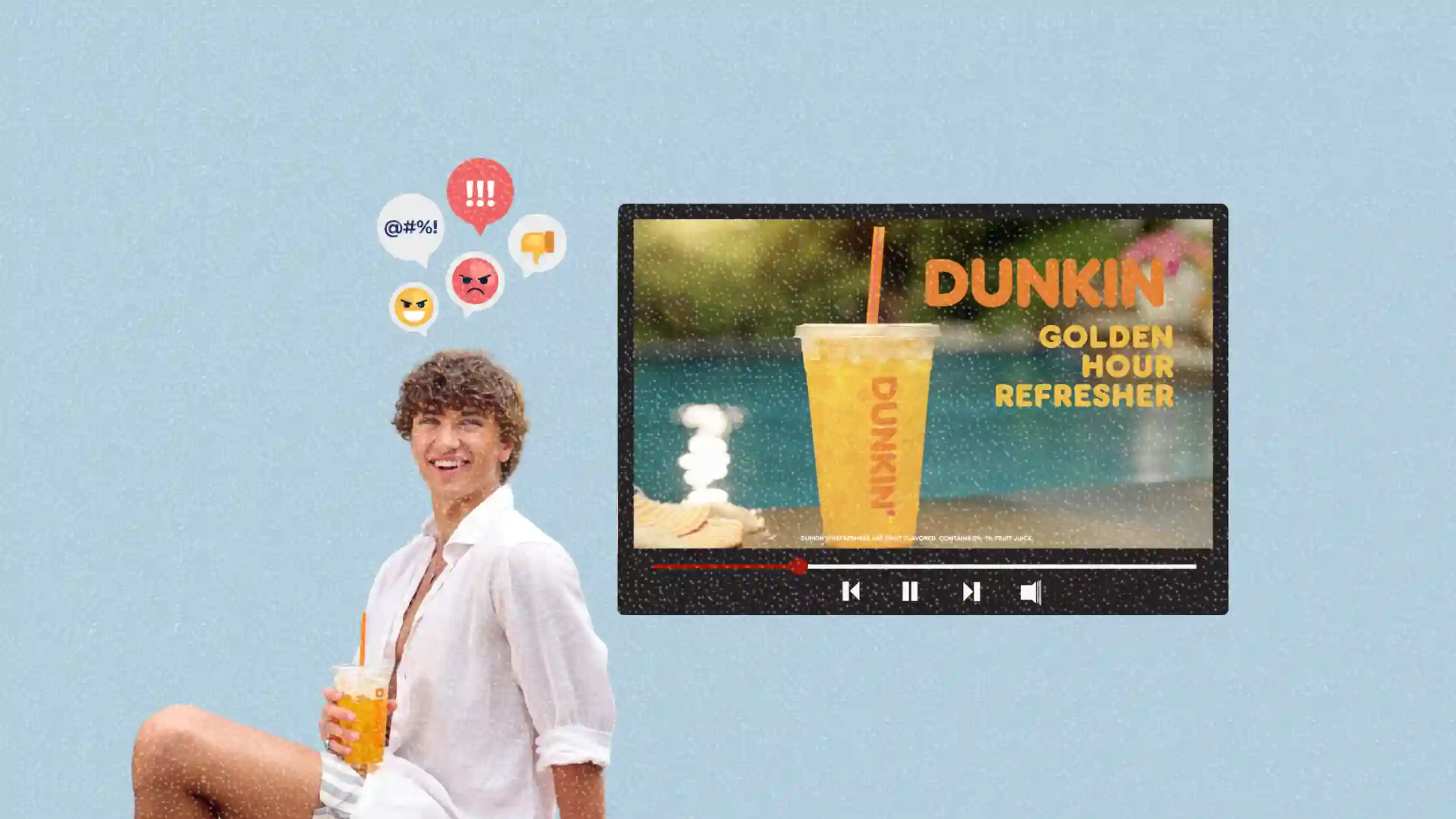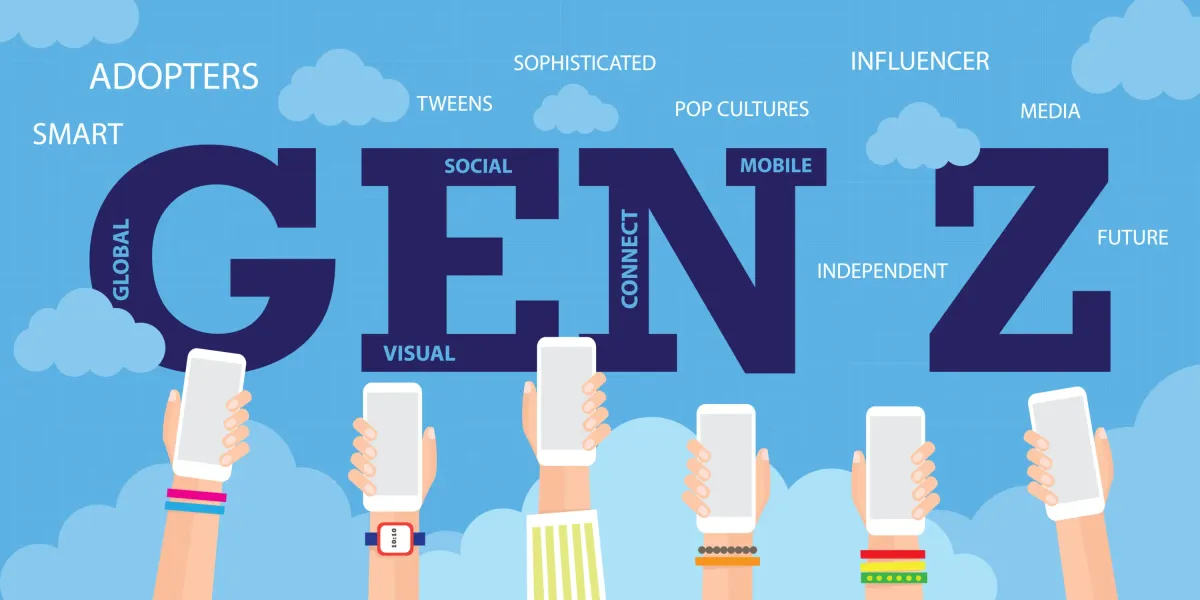Dunkin’s new ad joins American Eagle in sparking controversy over genetics references
Two brands, two campaigns, one backlash. Genetics references in ads are hitting a nerve.

Dunkin’s new campaign may be selling cold drinks, but the internet’s response has been anything but chill. The brand’s latest Golden Hour Refresher ad featuring actor Gavin Casalegno is drawing heat for referencing “genetics” in a way that critics say subtly reinforces white-centric beauty standards.
This ad drops just days after American Eagle’s “Sydney Sweeney Has Great Jeans” campaign ignited its own controversy, with audiences accusing it of echoing eugenic rhetoric. Together, the back-to-back campaigns have triggered broader questions around how brands are invoking genetics and why the word is showing up in beauty ads at all.
This article explores what happened, why these campaigns are getting flagged, and what marketers need to consider when playing with language that touches on race, beauty, and biology.
Short on time?
Here is a table of content for quick access:
- What triggered all the backlash toward the campaign
- Why “genetics” is becoming a brand liability
- What marketers should know

What triggered all the backlash toward the campaign
In Dunkin’s spot, Casalegno credits his tan to “genetics,” saying, “I just got my color analysis back and guess what? Golden summer.” The ad leans into the popular color analysis trend without much context beyond the actor’s appearance.
The issue? American Eagle had just released an ad starring Sydney Sweeney, an actress frequently cited as embodying Eurocentric beauty, making a playful but awkward pun about jeans and genes.
In it, she explains how traits like hair color and personality are passed down from parents. Viewers saw the spot as tone-deaf, even invoking coded language linked to historical ideas of eugenics.
Dunkin’s ad, while more subtle, arrived in the shadow of that controversy. Viewers immediately connected the dots and took to TikTok, Instagram, and YouTube to criticize what they see as a troubling trend. Ads are leaning into genetics to promote aesthetics rooted in whiteness.
Why "genetics" is becoming a brand liability
Genetics is not just a buzzword. It is a loaded one. When used in the context of skin tone, hair, or eye color, it can quickly veer into exclusionary territory, especially if the traits being praised fall within historically privileged beauty norms.
On TikTok, one viral creator called Dunkin’s line “especially odd,” noting that, unlike American Eagle’s pun on “jeans,” there was no creative justification here. That video has now passed 2.8 million views and more than 290,000 likes. Comments like “why is Dunkin talking about genetics” and “Starbucks, now Dunkin?!? I’m making coffee at home” reflect how quickly audiences connect these references to broader patterns of racial insensitivity.
@vital_media_marketing Like Dunkin you couldn’t hold off for terrible timing if it’s just a coincidence 😂☠️ #sydneysweeney #americaneagle #thesummeriturnedpretty #jerimiahfisher #gavincasalegno
♬ original sound - Angie- VM Marketing
The data backs it up. According to media intelligence firm CARMA, there were around 55,000 mentions of Dunkin’s campaign featuring Gavin Casalegno after it became tied to American Eagle’s Sydney Sweeney ad. Before the connection, conversations about Dunkin’ were relatively positive, with 31.6% positive sentiment and only 13% negative. After the link to Sweeney’s campaign emerged, sentiment flipped: only 12.2% of mentions were positive, while negative sentiment spiked to 39.7%.
Dunkin’ is now at the center of a growing social media controversy, not solely because of its own ad, but because of how quickly netizens drew parallels to the Sydney Sweeney genetics controversy. This amplified effect reveals how fragile brand perception has become, especially when campaigns intersect with identity politics, even indirectly.
What’s emerging is a growing sensitivity around how brands discuss identity and appearance. Even a single word, when poorly timed or presented without context, can derail an otherwise straightforward campaign message.
What marketers should know
If your brand touches on beauty, identity, or physical traits, here’s how to avoid triggering the same response:
1. Consider cultural context, especially when referencing biology or beauty
Phrases like “genetics” are not neutral when paired with glowing skin, blue eyes, or blonde hair. Marketers should ask: Would this framing land the same way with diverse audiences?
2. Skip the trend-jacking if the context isn’t clear
Dunkin’s nod to “color analysis” feels lifted from TikTok, but without a strong creative link. If you are borrowing from internet trends, make sure it is anchored in your brand’s message and won’t feel hollow or misused.
3. Avoid scientific language unless it has a purpose
Unlike American Eagle’s pun, Dunkin’ had no narrative reason to mention genetics. If there is no payoff like humor, relevance, or deeper meaning, leave it out. Ambiguity invites interpretation, and right now, audiences are interpreting critically.
4. Use social listening tools before launch
Had Dunkin’ reviewed sentiment around American Eagle’s campaign, it may have reconsidered timing or tone. Tools like Brandwatch, Sprinklr, or even TikTok’s built-in comment analytics can offer early red flags.
5. Revisit your briefing process
This is the kind of misstep that happens when scripts pass without sensitivity checks. Creatives and brand managers alike should be trained to identify language that might unintentionally reinforce exclusion or racial bias.
When timing kills creative
Dunkin’s ad might not have caused controversy on its own. But released right after the Sydney Sweeney campaign and amid viral backlash around the word “genetics,” it landed in hot water.
Marketers cannot rely on intent to carry them. In a landscape where perception drives impact, language choices need to be strategic, not just clever. Awareness, timing, and cultural nuance are now essential parts of campaign success.




